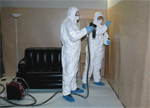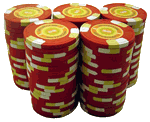ACSR Conference 2011 – Jacksonville, FL, USA

I attended the 2011 Association for Crime Scene Reconstruction [ACSR] conference in Jacksonville, FL, USA last week. Thanks to Tom Brady, Michael Maloney, and the NCIS team for organizing the conference and especially for giving me the opportunity to present a workshop on HemoSpat and a talk on my cast-off pattern research. Special thanks to Walter for helping me set up and tear down the workshop.
This was my first ACSR conference and I’d like to thank the ACSR members and other attendees for making me feel so welcome. The talk highlights for me at this conference were Digital Mapping of Differential Oxidation Arising From Fingerprint Sweat Deposits presented by Dr. John Bond [Scientific Support Department, Northamptonshire Police, England], Hijacked Naval Vessel Scene Investigation and the Impact of Forensic Reconstruction by E. Toomer, and Wound Mapping: A Reconstruction Technique by Michael Maloney [Bevel, Gardner & Associates].
I also had the opportunity to take a full day Basic Digital Forensic Photography workshop with “Nikon Ron”. I found it really useful to get a breakdown of the basics and to get some hands-on experience through the exercises we completed. Thanks again to Walter for lending me his camera!
If you attended the conference and saw my presentation on Visualization of Linear Cast-off Patterns I’d really appreciate any feedback you may have on either the subject or my presentation delivery.
Next year’s ACSR conference is in Monterey, CA, USA. Should be fun and I’m sure the hospitality suite will be well stocked for this one!
Lead Developer, HemoSpat

 Martin Eversdijk [
Martin Eversdijk [ I think the workshops went fairly well and I enjoyed the interaction with the attendees. Thanks to Brian Allen [
I think the workshops went fairly well and I enjoyed the interaction with the attendees. Thanks to Brian Allen [ A couple of weeks ago I attended the third European IABPA conference in Lisbon, Portugal. As with the last conference in Porland, Oregon, it was a busy one for me. Thanks to Lino Henriques [
A couple of weeks ago I attended the third European IABPA conference in Lisbon, Portugal. As with the last conference in Porland, Oregon, it was a busy one for me. Thanks to Lino Henriques [